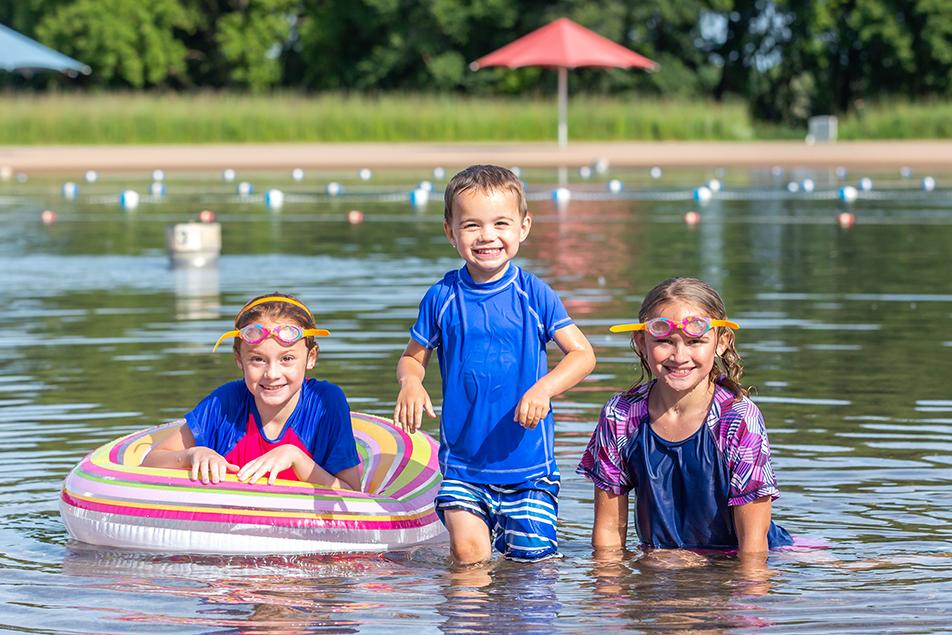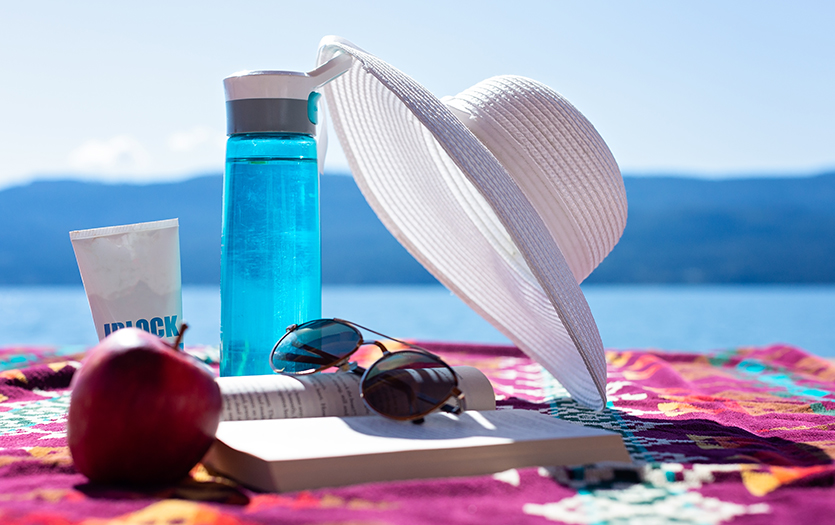
This post was written by Megan Kariger, MS, CCLS, certified child life specialist, and Molly Gerke, BS, CCLS, certified child life specialist, Parkview Health.
As the weather warms up, restrictions are being lifted, e-learning has come to an end and families are spending most of their free time on the water. With lake and pool time increasing, children need to be prepared so they can enjoy water activities safely. This can be done by assessing their swimming skills and identifying what flotation devices they may need to utilize.
According to the American Red Cross, there are 5 basic swim skills your child needs to be able to do when swimming in any body of water. These skills include:
- Step or jump into the water over your head.
- Return to the surface and float or tread water for one minute.
- Turn around in a full circle and find an exit.
- Swim 25 yards independently.
- Exit from the water.
Basics swim skills require multiple lessons. Proficiency and confidence in these skills can have many contributing factors like comfort level with water, development, emotional maturity, physical delays, cognitive delays and health concerns. It’s also important to read your child’s interest and allow that to guide the decision of when to start swim lessons.
Swim lessons are a great way to build comfort with water and practice basic swim skills. Swim lessons do not prevent drownings, but they do support water safety habits and confidence. If you want to enroll your child in a local swim class to learn or strengthen their swimming skills, the YMCA, American Red Cross and Infant Swimming Resource all provide lessons. Keep in mind, inexperienced or weak swimmers will always need closer supervision and an adult to be at arm’s length.
Lifejackets or Personal Flotation Devices (PFDs) should be utilized until the child has accomplished basic swim skills, is self-aware and confident in their abilities. Adults should always provide supervision without distraction. Also, it’s important to realize that kids may get tired and need to put on a PFD even if they are good swimmers. Therefore, taking breaks with and without PFD is extremely important.
Infants and toddlers
At 0-2 years old, your infant or toddler is not going to be able to swim independently. The purpose, at this age, is to help them get comfortable in the water. Infants do not have the developmental capability or coordination to learn the complex movements or effectively raise their heads above the water to breathe. Swimming lessons can begin as young as 6 months old, but the American Academy of Pediatrics (AAP) does not recommend enrolling your infant in lessons until the age of 1. The American Red Cross recommends that this age group wear a U.S. Coast Guard (USCG) approved life jacket when in or around water. Regarding supervision for this age group, the American Academy of Pediatrics recommends touch supervision if an infant or toddler is in or around water including swim lessons. Touch supervision is when an adult is always within arm’s reach.
Preschoolers
At 3-5 years old, your preschooler is starting to become more coordinated and capable of doing more complex gross motor movements such as kicking a ball, pedaling a bike or jumping. Mastering these skills can help a child learn how to tread water, increase their awareness and maintain balance while in the water. They can also start to learn and practice the basics of body mechanics when in the water. For example, your child could start to practice kicking in a controlled, purposeful manner and kicking straight back, which will help with swimming skills down the road. A simple way to practice this skill is by having your child use a kickboard or the side of the pool.
Another skill to practice in the water is blowing bubbles. This can be illustrated by an adult blowing bubbles in a drink with a straw and then demonstrated again in the water. Remember, it’s still important to use touch supervision at this age. Children in this age group can also learn and practice how to float, with the support of an adult. The key aspect of learning how to float is being able to relax your body. Safe Kids reminds families that swimming aids such as water wings or noodles are fun toys for kids, but they should never be used in place of a USCG approved personal flotation device. The AAP also reminds parents and caregivers that floaties should not be used in place of a life jacket. They can give a false sense of safety in the water. Floaties run the risk of being punctured or slowly deflating while your child is in the water and can easily be slipped off. They were not created to be a life-saving device.
School-aged
Children aged 6-12 have likely started to become more independent and confident in the water. Additionally, they have a greater awareness of their body than younger children, so they are more capable of doing different swimming strokes. School-aged children also have a greater level of endurance, which will allow them to swim longer distances for longer periods. Furthermore, their lungs have developed more which will allow them to hold their breath longer and swim underwater. School-aged children are more likely to be fully competent in the five basic swim skills mentioned above. Nevertheless, it is important to assess your child’s skill level and experience in different water settings. For example, your child might be independent in pools but is unprepared or unable to tread in the choppy rough waters of a lake or ocean.
Teenagers
Teenagers are typically able to swim independently and can master the five water survival skills, but, again, the ability to master those skills will vary based on the body of water. It’s important to continue to encourage safe water practices at this age like swimming with a partner, getting out of the water during storms, being aware of rip currents or fast-moving water, and wearing a life jacket if needed.
Lifejackets
As previously mentioned, lifejackets should always be worn by inexperienced, curious toddlers and non-swimmers when near a body of water. Children who have not yet mastered the five basic water skills and still require touch supervision should also wear lifejackets during water activities. Remember, pre-school and school-aged children do not have the developmental capability to appropriately recognize risks. Therefore, life jackets add a layer of protection to prevent drownings and promote safe swim practices.
To help find the right fit for you and your loved ones, the USCG provides an overview of each type of lifejacket and its purpose. All USCG approved lifejackets will be labeled. Additionally, Safe Kids has an informational video on how to check if your child’s life jacket fits correctly. Remember, it’s important to inspect your child’s life jacket to make sure it’s in good condition and still fits.
As for learn-to-swim aids or vests, which are commonly used at pools and waterparks, are either USCG level-iii or not USCG approved. While these can be utilized by non-competent swimmers, they are not life-saving devices and should be used alongside touch supervision. Once a child is competent in the 5 basic swim skills they can choose to swim with or without swim aids or vest, but both child and adult should feel comfortable while still being able to provide supervision that would allow for a quick rescue if needed.
Helpful resources
American Red Cross: Water safety for kids



